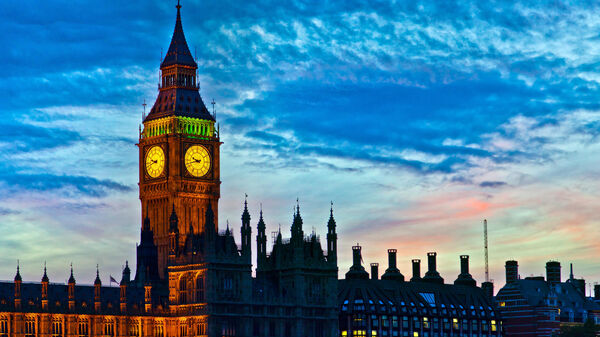Top Sights Where ‘Harry Potter’ Was Filmed
By Gene Openshaw
Harry Potter's story is set in a magical, largely fictional Britain, but the film series used many real locations as evocative backdrops. Other settings, like Diagon Alley, exist only at Leavesden Film Studios (20 miles north of London).
Many of the real-life filming sites are closed to visitors, far out of the way for most travelers, or an unmagical disappointment in person for all but the most committed fan. (Diehards can check British Tourist Board's more extensive list of filming locations.) But plenty of locations are worth visiting for their own sake; these are my top picks.
London
Harry first realizes his wizard powers in The Sorcerer's Stone (2001) when talking with a snake at the London Zoo's Reptile House.
When Hagrid takes Harry shopping for school supplies, they enter the glass-roofed Leadenhall Market and approach the storefront at 42 Bull's Head Passage — the entrance to The Leaky Cauldron pub (which, in the books, is placed among the bookshops of Charing Cross Road).
Harry catches the Hogwarts Express train at King's Cross Station. (The fanciful exterior shown in 2002's Chamber of Secrets was actually shot at nearby St. Pancras International Station.) Inside the glass-roofed train station, on a pedestrian sky bridge over the tracks, Hagrid gives Harry a train ticket. Harry finds his way to the magical platform 9¾ with some help, but these days it's well-signed, with a luggage cart that looks like it's disappearing into the wall, and a cleverly located gift shop. (Good luck reaching the platform itself without wizarding powers.) Expect a 30-minute wait for a photo with the cart.
In The Prisoner of Azkaban (2004), The Leaky Cauldron's exterior was shot on rough-looking Stoney Street, at the southeast edge of Borough Market, near The Market Porter pub. En route there, the Knight Bus squeezes between Muggle buses on Lambeth Bridge (between Parliament and the Tate Britain).
Mr. Weasley is befuddled by the Oyster card readers at Westminster Underground Station when he and Harry exit the Tube in The Order of the Phoenix (2007). The Half-Blood Prince (2009) kicks off with Muggles inside City Hall noticing a darkening sky, shortly before an attack by Death Eaters causes the Millennium Bridge to collapse into the Thames. In the first Deathly Hallows (2010), Harry, Ron, and Hermione nearly get hit by a bus while rushing through bustling Piccadilly Circus. The real government offices of Whitehall serve as exteriors for the Ministry of Magic (alas, the magical phone box shown on Scotland Place was brought in just for filming).
If you've got the time and interest, consider a Harry Potter–themed guided walk, such as the one offered by recommended London Walks.
Near Bath
Many scenes showing the mysterious side of Hogwarts were filmed in the elaborate, fan-vaulted corridors of the Gloucester Cathedral cloisters, 50 miles north of Bath.
In The Sorcerer's Stone, Harry is chosen for Gryffindor's Quidditch team in the halls of the 13th-century Lacock Abbey, 13 miles east of Bath. Harry also attends Professor Snape's class in one of the abbey's peeling-plaster rooms. (You can visit with recommended Mad Max Tours.)
Near Brighton
At the start of The Goblet of Fire (2005), Harry and friends take a portkey to the Quidditch World Cup and land on a hillside atop the Seven Sisters chalk cliffs.
Oxford
Several other parts of Hogwarts were filmed at Oxford University. In The Sorcerer's Stone, the students arriving at Hogwarts first ascend a stone staircase that, in real life, leads into the Great Hall of Christ Church College. Christ Church's high-ceilinged dining hall was a model for the one seen throughout the films (with the weightless candles and flaming braziers)…but the actual filming happened on a set at the Leavesden studios.
Later in The Sorcerer's Stone, Harry sneaks under an invisibility cloak into the Hogwarts Library (really Duke Humfrey's Library in the Bodleian Library), and he awakens in the Hogwarts infirmary (the big-windowed Divinity School of the Bodleian). And in The Goblet of Fire, Mad-Eye Moody turns Draco into a ferret in the New College cloister.
Durham and Northeast England
In The Sorcerer's Stone, Harry walks with his white owl, Hedwig, through a snowy cloister at Durham Cathedral, which was used throughout the series for various Hogwarts scenes.
Harry first learns to fly a broomstick on the green grass of Hogwarts' school grounds, filmed inside the walls of Alnwick Castle, where admission includes broomstick-riding lessons. This scenic castle, 30 miles from Newcastle, also appears as Hogwarts later in the series.
Scottish Highlands
Many of the movies' exterior shots — especially scenes of the Hogwarts grounds — were filmed in the craggy, cloudy Highlands of Scotland (mostly in the Fort William/Glencoe area).
The Hogwarts Express runs along the actual Jacobite Steam Train line (between Fort William and Mallaig). The movies show the train chugging across the real-life Glenfinnan Viaduct, where, in The Goblet of Fire, the Dementors stall the train and torture Harry. Nearby Loch Shiel and Loch Eilt, as well as Loch Morar (closer to Mallaig), were the stand-ins for the Great Lake in The Prisoner of Azkaban and The Goblet of Fire. Steall Falls, at the base of Ben Nevis, is the locale for the Triwizard Tournament in The Goblet of Fire.
Other scenes filmed in the Highlands include a desolate hillside with Hagrid's stone hut in Glencoe, which was the main location for outdoor filming in The Prisoner of Azkaban. Exterior scenes for The Half-Blood Prince were filmed in Glencoe as well as in the small village of Glenfinnan.
Ireland
While the movies were filmed almost entirely in Britain, one of Ireland's most famous natural sights plays a role in The Half-Blood Prince: The Cliffs of Moher, seen from the water, serve as the foreboding exterior of the cave where Harry and Dumbledore search for a horcrux.
Gene Openshaw is the co-author of the Rick Steves London guidebook.


